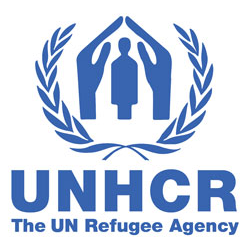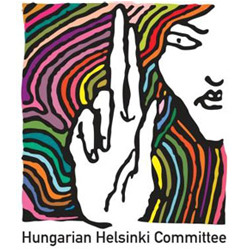Main Debate
- What level of scrutiny should the UN Committee Against Torture exercise in asylum-related cases?
Main Points
- Absolute nature of Art. 3
- The role of the UN Committee Against Torture in the protection against expulsion
- The Committee’s interim measures
- Assessment of credibility of torture victims
- Extraterritorial applications of Art. 3
- Suspected terrorists and inadequacy of diplomatic assurances
Treaties
- United Nations, Convention Against Torture and Other Cruel, Inhuman or Degrading Treatment or Punishment, 10 December 1984, 1465 U.N.T.S. 85, Arts 1, 3, 10, 16.
Soft Law
- OHCHR, UN Committee Against Torture (CAT), ‘General Comment No. 1: Implementation of Art. 3 of the Convention in the Context of Art. 22 (Refoulement and Communications)’, 21 November 1997. A/53/44, paras.6, 7.
Cases
Core
- M.A. & L.G. v. Sweden, CAT 373/2009, 19 November 2010. (return of long-time PKK member to Turkey where he is wanted under anti-terrorism laws would constitute a breach of art. 3).
- S.A. v. Denmark, CAT 339/2008, 15 November 2010. (return to Iran in the deteriorating situation since the elections of June 2009 would constitute a breach of art. 3 with regard to an individual who had suffered torture 7 years earlier for monarchist political activities).
- M.G. v. Sweden, CAT 349/2008, 11 Nov. 2010. (return of low level, but long-time PKK member to Turkey where she is likely to be imprisoned under anti-terrorism laws would constitute a breach of art. 3).
- E.N. v. Sweden, CAT 322/2007, 14 May 2010. (return of woman and her minor daughter to Democratic Republic of the Congo where widespread violence against women exists would constitute a breach of art. 3).
- A.T. v. France, CAT 300/2006, 11 May 2007. (violation of the Convention when France charged dual French/Tunisian national of terrorism, revoked his French citizenship, and expelled him to Tunisia while his asylum and CAT claims were still pending).
- C.A.R.M. v. Canada, CAT 298/2006, 24 May 2007. (discrepancies in testimony about threats from Mexican government officials and drug cartel were due to misunderstandings, but insufficient evidence of real, foreseeable, personal risk).
- E.P. v. Azerbaijan, CAT 281/2005, 1 May 2007. (violation of the Convention when Azerbaijan disregarded Committee’s request for interim measures and expelled applicant who had received refugee status in Germany back to Turkey where she had previously been detained and tortured).
- E.R.K. & Y.K. v. Sweden, CAT 270 & 271/2005, 30 April 2007. (no violation of the Convention when claimants were expelled to Azerbaijan based on evidence that many supporting documents were false).
- C.T. & K.M. v. Sweden, CAT 279/2005, 22 January 2007. (Rwandan women repeatedly raped in detention in Rwanda by state officials have substantial grounds to fear torture if returned while ethnic tensions remain high; complete accuracy seldom to be expected of victims of torture, and inconsistencies in testimony do not undermine credibility if they are not material).
- V.L. v. Switzerland, CAT 262/2005, 20 November 2006. (late disclosure in asylum proceedings of rape does not impair claimant’s credibility).
- Agiza v. Sweden, CAT 233/2003, 20 May 2005. (non-refoulement under CAT is absolute even in context of national security concerns; insufficient diplomatic assurances were obtained by sending country).
- Mutombo v. Switzerland, CAT 13/1993, 27 April 1994. (no violation of the Convention where applicant has established existence of gross violations of human rights in country of return, absent sufficient evidence of the applicant’s ‘personal risk’).
- Tala v. Sweden, CAT 43/1996, 15 November 1996. (contradictions and inconsistencies in testimony of asylum seeker attributed to post-traumatic stress disorder resulting from torture).
- Aemei v. Switzerland, CAT 34/1995, 9 May 1997. (activities carried out by receiving state may also give rise to risk of being subjected to torture).
- Paez v. Sweden, CAT 39/1996, 28 April 1997. (membership of applicant in the Peruvian Shining Path organisation is not material to enjoyment of absolute Art. 3. right, contrasting with Art. 1F of 1951 Geneva Convention).
Extended
For a comparative analysis of national case law, see Matter of J-E, 23 Immigration & Naturalization Decisions 291, (BIA 2002). (detention in Haitian prison is not torture when legally sanctioned).
- Matter of G-A, US Department of Justice, Executive Office for Immigration Review-Board of Immigration Appeals, Immigration & Naturalization Decisions 366 (BIA 2002). (Iranian Christian convicted of drug offense in US cannot be returned to Iran).
- Suresh v. Canada (Minister of Citizenship & Immigration), [2002] 1 S.C.R. 3. (Canadian judicial decision ruling that deportation to torture is prohibited by CAT and ICCPR and Canada lacked sufficient procedural safeguards for deportations when there is a risk of torture).
Readings
Core
- J. Doerfel, ‘The Convention Against Torture and the Protection of Refugees’, Refugee Survey Quarterly, vol. 24, no. 2 (2005), pp. 83–97.
- E. Odhiambo-Abuya, ‘Reinforcing Refugee Protection in the Wake of the War on Terror’, Boston College International & Comparative Law Review, vol. 30 (2007), pp. 277–329.
Extended
- M. Jones, ‘Lies, Damned Lies and Diplomatic Assurances: The Misuse of Diplomatic Assurances in Removal Proceedings’, European Journal of Migration andLaw, vol. 8, no. 1 (2006), pp. 9–39.
- B. Gorlick, ‘The Convention and the Committee against Torture: A Complementary Protection Regime for Refugees’, International Journal of Refugee Law, vol. 11, no. 3 (July 1999), pp. 479–495.
- O. Okafor and P. Okoronkwo, ‘Reconfiguring Non-refoulement? The SureshDecision, ‘Security Relativism’, and the International Human Rights Imperative’, International Journal of Refugee Law, vol. 15, no. 1 (2003), pp. 30–67.
- R. Plender and N. Mole, ‘Beyond the Geneva Convention: Constructing a De Facto Right of Asylum from International Human Rights Instruments’, in F. Nicholson and P. Twomey (eds), Refugee Rights and Realities: Evolving International Concepts and Regimes (Cambridge: Cambridge University Press, 1999), pp. 81–105.
- D. Weissbrodt and I. Hortreiter, ‘The Principle of Non-refoulement: Art. 3 of the Convention Against Torture and Other Cruel, Inhuman or Degrading Treatment or Punishment in Comparison with the Non-refoulement Provisions of Other International Human Rights Treaties’, Buffalo Human Rights Law Review, vol. 5, no. 1 (1999), pp. 1–30.
- C.W. Wouters, 'International Legal Standards for the Protection from Refoulement', (Antwerp: Intersentia, 2009), pp. 425–524.



